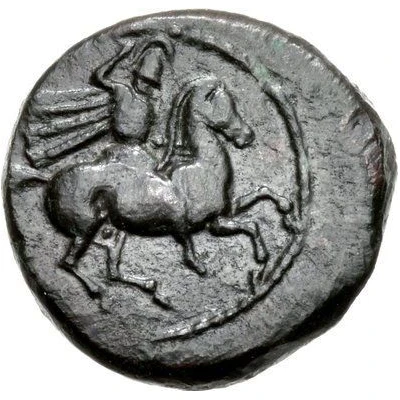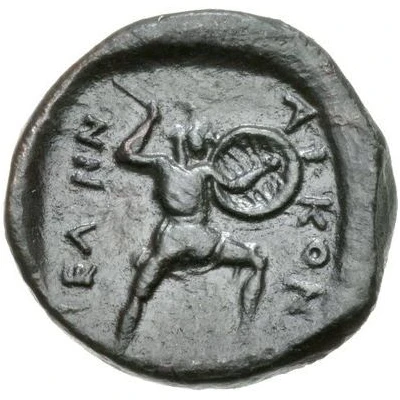


© Classical Numismatic Group, Inc.
Chalkon 375 BC - 325 BC
| Bronze | 2.3 g | 15 mm |
| Issuer | Pelinna (Thessaly) |
|---|---|
| Type | Standard circulation coin |
| Years | 375 BC - 325 BC |
| Value | Chalkon (1⁄48) |
| Currency | Drachm |
| Composition | Bronze |
| Weight | 2.3 g |
| Diameter | 15 mm |
| Shape | Round (irregular) |
| Technique | Hammered, Incuse |
| Demonetized | Yes |
| Updated | 2024-10-10 |
| Numista | N#317342 |
|---|---|
| Rarity index | 100% |
Reverse
Warrior, dressed in short tunic, carrying shield with his left hand and spear with his right hand, advancing right and raising spear to strike at unseen adversary; all in shallow incuse square with rounded edges and corners.
Script: Greek
Lettering: ΠΕΛΙΝNAIKON
Translation: The Pelinnaians
Interesting fact
The Chalkon coin was used as a form of currency in ancient Greece, specifically in the region of Thessaly, and its design features a stylized image of a horse on one side and a human figure on the other. This coin was unique in that it was made of bronze, which was a more durable material than the copper used in other coins of the time, and it was also lighter in weight, making it easier to handle and transport. Additionally, the Chalkon coin was one of the first coins to feature a standardized design, which helped to establish a uniform currency system in ancient Greece.